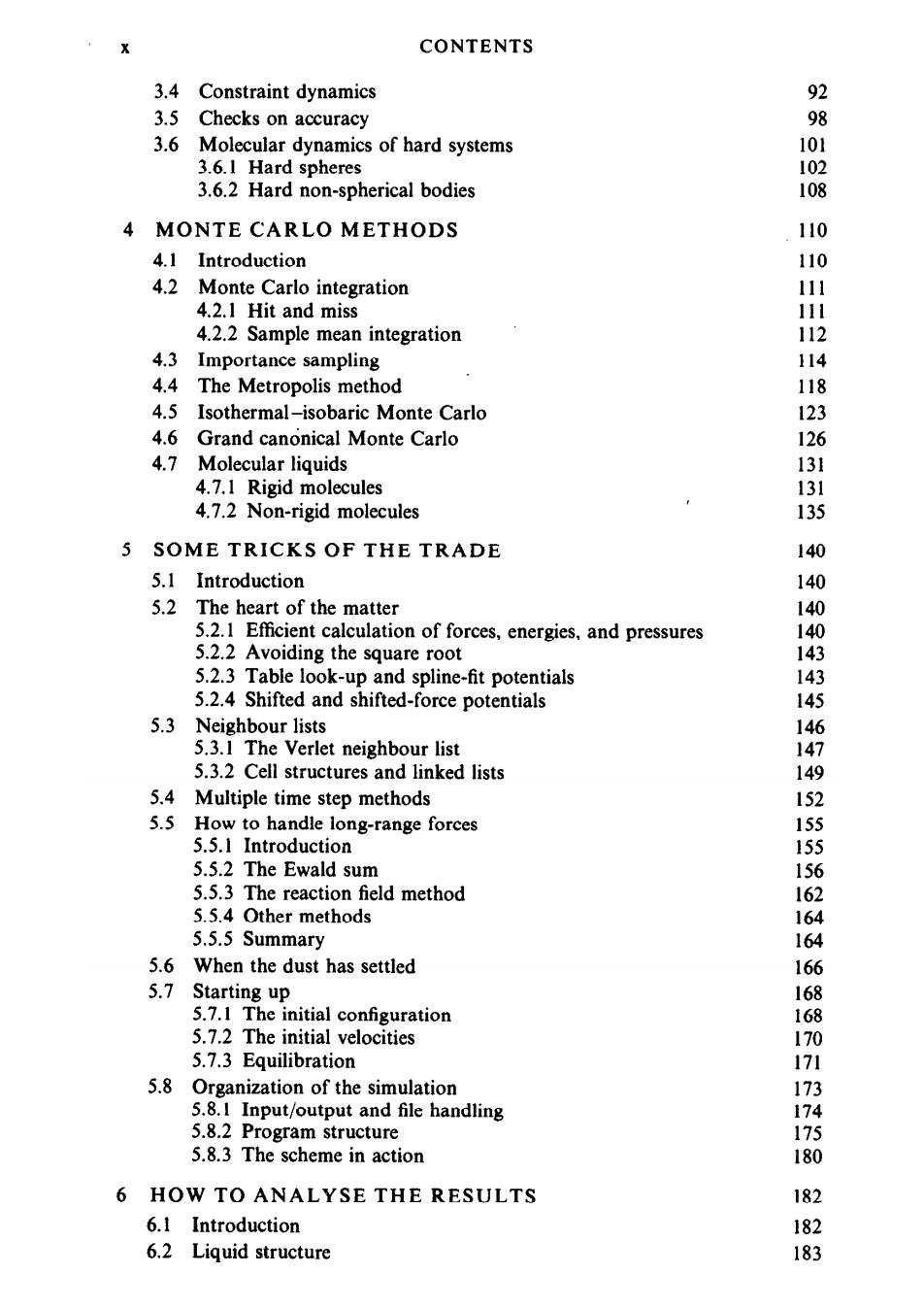正在加载图片...

CONTENTS 3.4 Constraint dynamics 92 3.5 Checks on accuracy 3.6 Molecular dynamics of hard systems 101 3.6.1 Hard spheres 102 3.6.2 Hard non-spherical bodies 108 4 MONTE CARLO METHODS 110 4.1 Introduction 110 4.2 Monte Carlo integration 111 4.2.1 Hit and miss 111 4.2.2 Sample mean integration 112 4.3 Importance sampling 114 4.4 The Metropolis method 118 4.5 Isothermal-isobaric Monte Carlo 123 4.6 Grand canonical Monte Carlo 126 4.7 Molecular liquids 131 4.7.1 Rigid molecules 131 4.7.2 Non-rigid molecules 135 5 SOME TRICKS OF THE TRADE 140 5.1 Introduction 140 5.2 The heart of the matter 140 5.2.1 Efficient calculation of forces,energies,and pressures 140 5.2.2 Avoiding the square root 143 5.2.3 Table look-up and spline-fit potentials 143 5.2.4 Shifted and shifted-force potentials 145 5.3 Neighbour lists 146 5.3.1 The Verlet neighbour list 147 5.3.2 Cell structures and linked lists 149 5.4 Multiple time step methods 152 5.5 How to handle long-range forces 155 5.5.1 Introduction 155 5.5.2 The Ewald sum 156 5.5.3 The reaction field method 162 5.5.4 Other methods 164 5.5.5 Summary 164 5.6 When the dust has settled 166 5.7 Starting up 168 5.7.1 The initial configuration 168 5.7.2 The initial velocities 170 5.7.3 Equilibration 171 5.8 Organization of the simulation 173 5.8.1 Input/output and file handling 174 5.8.2 Program structure 175 5.8.3 The scheme in action 180 6 HOW TO ANALYSE THE RESULTS 182 6.1 Introduction 182 6.2 Liquid structure 183